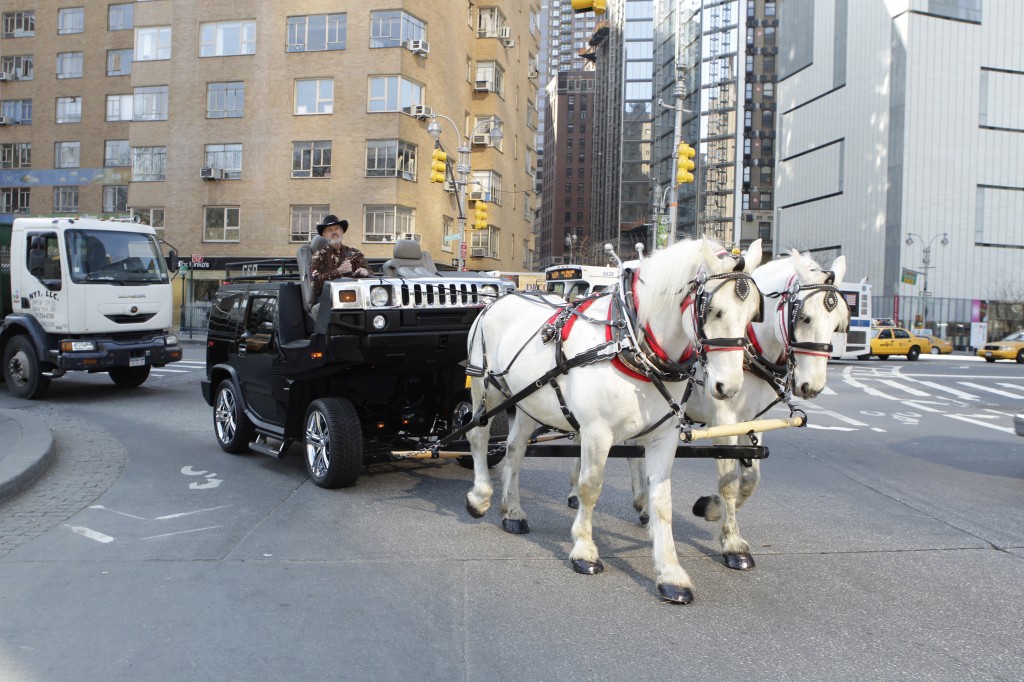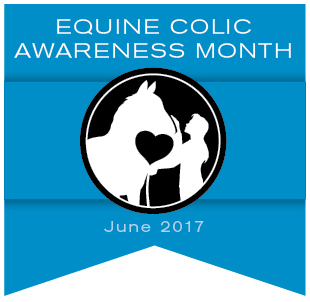Author: Elaine Juska Joseph, Cedar Knoll Farm
Duke and Diesel is one of Cedar Knoll Farm’s main carriage teams (we currently have nine Percherons). Not only are they a top-notch commercial team of greys used for weddings and carriage rides, but we also use them for farming, such as plowing, haying, disking and logging. They are an impeccable, hard working and well-matched team, and without a doubt the one team we would be devastated to lose.
They are half brothers, just two weeks apart, and have always been together since birth. We bought them as two year olds back in 1999, still nearly black in color and relatively green. Their names were Pete & Pat – we renamed them Duke (after John Wayne, my husband’s favorite actor) and Diesel (because he had a “rough idle”).
It wasn’t long after acquiring them that Duke fell into a routine of colicking. At first it was mild, until during one episode it became apparent he needed more intervention than just the vet with a gallon of oil. We took him up to Tufts University, in Grafton, MA, where after three days he was sent home to us with strict orders: no more pelleted feed. Once home, we talked it over. Thinking sweet feed would make the team “hot” for commercial rides, we ignored the doctor’s orders and continued with pellets. It wasn’t long, however, that Duke was up at Tufts again. He pulled through OK. But this time, we followed the doctor’s orders and switched to a 12% sweet feed, because, we were told, it would have a higher moisture content, be easier for the horse to digest, and would not expand in his gut. We were also told to apply a cup of mineral oil (NOT corn oil) to the grain each feeding, to help keep Duke regular. We never hesitated, and religiously put what we learned — a $5,000.00, two-part lesson — into practice.
Labor Day weekend 2006 was filled with the usual carriage and hayrides with Duke & Diesel. When Monday came around, we were fortunate enough to have the day off. By the evening, however, we looked on in disbelief as Duke started his routine of laying down, groaning, and rolling his lip as the spasms in his gut became more painful. The vet was called in. His gums were pale, and upon a rectal exam, showed a blockage. Because it was nearing feeding time and there were numerous other horses to care for, Terry loaded Duke and took him to Tufts alone. I stayed behind and took care of everything on the farm.
By midnight, my husband was crying to me on the phone. We had two choices in regard to our beloved horse: let it go and watch Duke die, or allow the doctor to operate, to the tune of $10,000.00, and a 50/50 chance he would even live past the operation. Duke has always been Terry’s favorite, so the decision was easily made to operate.
Terry recalls the surreal vision of Duke, all 17.2HH, 1800 lbs of him, on the operating table, all four legs spread apart by massive ropes and pulleys, his intestines laid out beside him. “The doctor dressed me up in scrubs and brought me into the operating room, to show me what was wrong,” he remembers. “Duke had a restriction in his small intestine, a birth defect that made that section only half as large in diameter as it should have been. This defect was causing the impactions. Because of its location, it couldn’t just be removed. The doctor made the decision to do something he wasn’t even sure would work — a complete bypass of that area of the intestine, using a piece of Duke’s large intestine.”
For 15 days after the operation, Duke remained at Tufts, being monitored and slowly being re-introduced to solid food (fine stemmed hay). Because draft horses are particularly vulnerable to the anesthesia, there were grave concerns of complications, including founder. As the days passed, however, it became obvious that Duke was a fighter, and he survived it all without a single complication. We brought him home, and for four months he stayed in a box stall built just for the purpose. Diesel, who missed his brother so badly we thought we might lose him, was brought in each night to be next to Duke. Because Duke was not allowed to be turned out for fear of injuring his incision, he was hand walked each day, at first for just a few minutes, later for considerable amounts of time. By April, eight months after his operation, Duke was back in the game along side his brother Diesel, plowing fields, and pulling fancy wedding carriages, as if nothing had ever happened.
To this day, Duke is fed a non-commercial sweet feed consisting of oats, corn, spelts and molasses, with a cup of mineral oil mixed in, at each feeding. Since his operation in 2006, Duke has not once colicked. Physically, however, his body changed from the ordeal. His neck is no longer as thick as it was prior to that fateful time, and his gut seems proportionally larger, without doubt from having his intestines removed and put back into place. One thing is for sure, however — he is still our favorite, and we have no regrets about the decision we made that night to save Duke’s life.








Quando conhecemos um animal, vemos a sua grandeza ,então não medimos esforços para salvar a maravilha viva que entrou em nossas vidas.